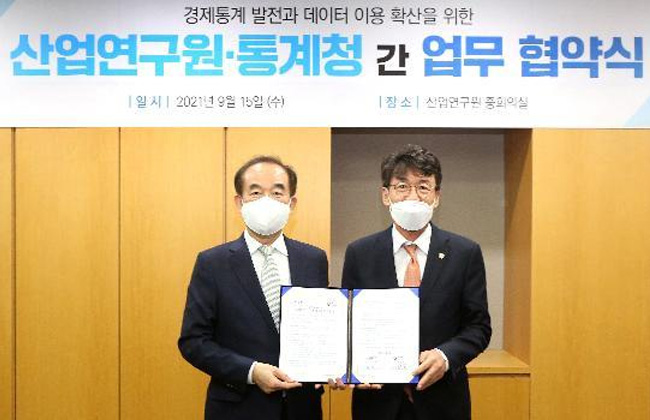당해 연도의 연구 방향 및 중점 연구목표를 달성하기 위해서 수행하는 연구원의 대표 보고서

The economic policies carried out by Korea over the past half century have transformed the country from a rural economy into an industrialized one. Gross Domestic Product (GDP) has quadrupled since the late 1990s alone, to US$1.4 trillion in 2016, making it the 11th largest economy in the world (WDI, 2017).1) In the process, Korea has become one of the world’s most important manufacturing hubs. Several of the country’s firms have risen to prominence in key global sectors including automotive, electronics and shipbuilding; today, Samsung, LG, and Hyundai are household names around the globe. This success has been built through rapid government-led industrialization and its support for a small number of large, globally competitive firms.
Korea’s rise as an industrial power has occurred during a period of major reorganization of global trade and industry around global value chains (GVC). Since the mid-1960s, global firms have been slicing up their supply chains in search of low-cost and capable suppliers offshore. This process of global outsourcing and offshoring initially focused on the simple assembly of parts supplied by US manufacturers, typified by the US production-sharing with Mexico, but the pace of offshore production soon accelerated dramatically (Dicken, 2011).2) In the 1970s and 1980s, retailers and brand-name companies joined manufacturers in the search for offshore suppliers of most categories of consumer goods. The geography of these chains expanded from regional production-sharing arrangements to full-fledged global supply chains, with a growing emphasis on East Asia (Gereffi, 1996).3) In the 1990s and 2000s, the industries and activities encompassed by global supply chains grew exponentially, covering not only finished goods but also components and subassemblies, and affecting a wide range of sectors, from automotive to electronics and household appliances to infrastructure and shipbuilding.
A central element of these changes has been the relocation of manufacturing sectors to a host of emerging countries, including China, Mexico and Vietnam. While this began with light manufacturing, it increasingly covers more high-tech sectors. This relocation continues to gather momentum with more and more developing economies entering GVCs. More recently, however, new disruptive technologies, such as automation, have emerged that could facilitate the return of many value chain activities to traditional centres in North America and Europe (Butollo, 2017).4) Thus, having built its economy on a strong manufacturing base, Korea must now redefine its growth drivers for the future. Its strong commitment to process and product improvement have seen steady gains in productivity and output in the past. However, as the country looks to its future, this may not be sufficient to maintain its competitiveness versus both the lower cost locations which are steadily upgrading, and those advanced industrialized countries which are rapidly innovating, defining brand-new industries, and ramping up new production technologies.
While leading manufacturing bases in the US, Europe and Japan are likewise grappling with how to best confront the changing global stage, Korea’s unique past development trajectory which shaped the way it engaged with GVCs now means it must chart a distinct course forward. Where leading firms from the US, Europe and Japan used their knowledge and coordination leadership to leverage the capabilities of strong international networks to become global players, successful firms from Korea have followed a somewhat different path. Well-known global giants, such as Samsung and Hyundai, supported by the national government, have rather relied on high degrees of vertical integration and networks of smaller, local suppliers to be competitive. In doing so, these strong lead firms have maintained control over their manufacturing capabilities and driven their competitiveness through in-house productivity, product and technology improvements. This has been facilitated by investment in research and development (R&D) that outranks the rest of the world. However, in doing so, the country has focused its innovative energies on just a small set of industries. Policymakers now face the question of how to orient these tremendous resources to competitively position Korea as a global economic leader of tomorrow.
As part of efforts to identify the best course forward, the Korea Institute for Industrial Economics & Trade (KIET) and Duke University Global Value Chains Center (Duke GVCC) collaborated for a global value chain study. The goal of this study is to analyze the country’s participation in specific global industries to identify broader lessons for Korea’s future ambitions for industrial transformation. To do so, we examine Korea’s participation in two major industrial sectors: electronics and shipbuilding. Together, these two industries comprise 30% of exports, account for over half a million semi- and skilled jobs and a substantial share of the country’s R&D spending. They provide two distinct perspectives for Korea’s participation in GVCs. On one hand, electronics products are targeted to the consumer market, technologies are rapidly changing and profits are derived from bulk production for mass consumer markets, and control over marketing and branding. Shipbuilding, on the other hand, is very capital-intensive, ships have long life cycles, and production is highly concentrated in three countries. In both industries Korea has established a global leadership position in a select number of final product categories and key component products by continually investing in process and product upgrading coupled with strong R&D investments.

산업연구원의 본 저작물은 “공공누리 제4유형 : 출처표시 + 상업적 금지 + 변경금지” 조건에 따라 이용할 수 있습니다. 저작권정책 참조
이메일 수집방지를 위해
아래 보안문자를 입력해 주세요

아래 보안문자를 입력해 주세요

담당자 정보를 확인해 주세요.
연구과제 제안이 접수되었습니다.
신청이 접수되었습니다.


코로나19 발생 이후 대부분의 고용 관심사가 항공 및 여행서비스, 음식·숙박 서비스 등 주로 서비스 업종에 집중된 상황에서 본 연구는 최근 그 중요성이 강조되고 있는 제조업의 고용변화를 살펴보았다. 분석에 따르면, 코로나19 이후 제조업 고용은 비교적 큰 충격 없이 빠르게 회복하는 모습을 보이고 있다. 제조업 고용은 서비스업에 비해 큰 충격 없이 유지되고 있고, 코로나19 직후 2020년 상반기에 약간 하락하였지만 하반기부터 회복 추세를 보이고 있으며, OECD 주요국의 제조업과 비교하여도 일본과 함께 고용 충격이 비교적 작게 나타나고 있다. 그러나 전반적으로 양호한 고용 성적에도 불구하고 제조업 내 특성 별로는 차이가 나타나는 것으로 보인다. 종사상 지위 별로 보면, 임시·일용직, 고용원이 있는 자영업자에서 고용 충격이 상대적으로 크게 나타났고, 상용직과 고용원이 없는 자영업자는 큰 충격이 없는 것으로 나타났다. 제조업 규모별로는 300인 이상의 경우 코로나 발생 초기 약간의 충격 이후 고용이 빠르게 반등하면서 코로나 이전보다 고용이 더 증가한 반면, 이보다 작은 규모의 제조업체들의 경우 고용 회복이 더디게 나타나고 있다. 고용의 중장기, 단기 추세선을 비교한 결과 제조업 업종에 따른 차이를 보였다. 코로나 발생 이전 3년간의 추세선을 2020년 1월부터 연장한 선과, 2020년 1월부터의 실제 자료를 이용한 단기 추세선을 비교한 결과, 의약품은 코로나19 발생 이전부터 시작하여 코로나19 발생 이후에도 견조한 증가세를 유지하고 있으며, 전자부품·컴퓨터, 기타운송장비, 가구는 코로나19 이후 오히려 고용 추세가 개선되었다. 그러나 다수 업종은 코로나 발생 이후 고용이 하락하였는데, 특히, 비금속광물, 1차금속, 금속가공 분야나 인쇄·기록매체 업종에서 하락이 상대적으로 크게 나타났다.
담당자 정보를 확인해 주세요.
inform@kiet.re.kr이름 : 박홍서
전화번호 : 044-287-3811
정보의 무단수집 방지를 위해
아래 보안문자를 입력해 주세요.

비밀번호를 입력해주세요.
[전지적키에트시점] (Eng sub)심상치 않은
국내 대기업 움직임??
KIET 시점에서 보는 미래 로봇 산업 전망은
어떨까요?
경제전문가가 알려드립니다!
(산업연구원 박상수 실장)